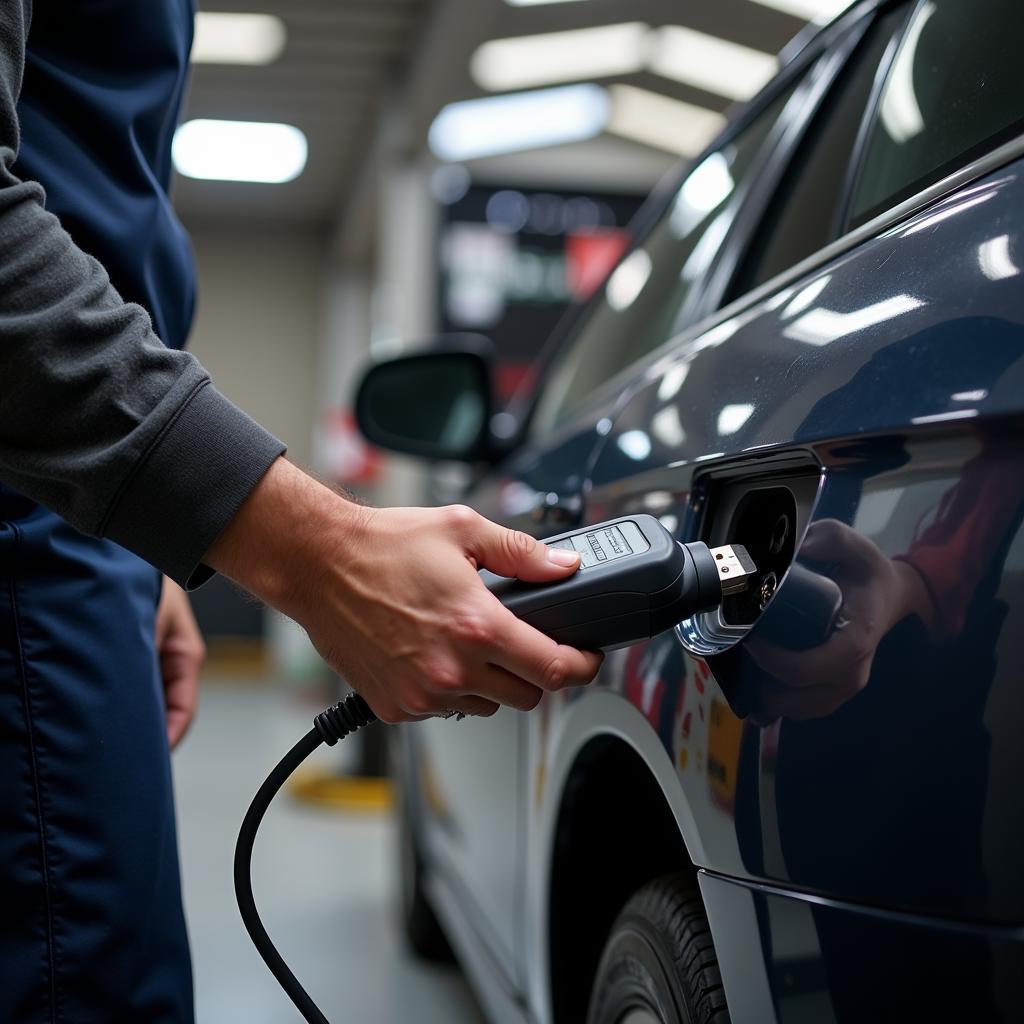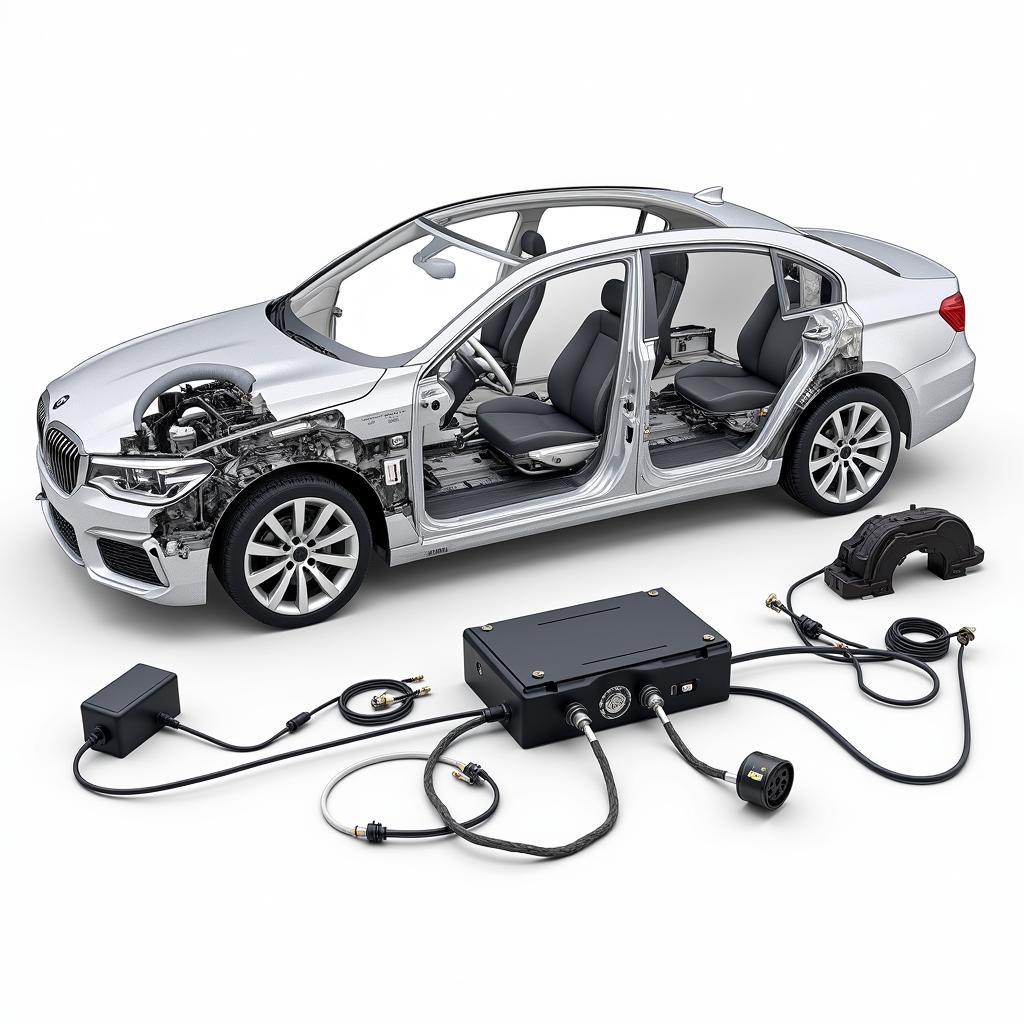The anti-lock brake system (ABS) warning light on your dashboard is a crucial safety indicator. When illuminated, it signals a potential issue with your ABS system, a critical safety feature that prevents your wheels from locking up during hard braking. Ignoring this warning light could compromise your ability to control your vehicle in emergency situations.
Understanding Your ABS System
Your ABS system uses wheel speed sensors to monitor the rotational speed of each wheel while you’re driving. When you hit the brakes hard, the ABS system receives data from these sensors. If it detects a wheel locking up, it rapidly pulses the brakes to that specific wheel, preventing skidding and allowing you to maintain steering control.
Common Reasons Your ABS Warning Light Is On
While the ABS warning light itself doesn’t pinpoint the exact problem, it alerts you to a range of potential issues within the system, such as:
-
Faulty ABS Wheel Speed Sensors: These sensors are vital for the ABS system to function correctly. A damaged sensor wire, debris buildup on the sensor, or a complete sensor failure can trigger the warning light.
-
Malfunctioning ABS Module: The ABS module is the “brain” of the system, processing data from the sensors and controlling the brake pressure. A faulty module can lead to erratic ABS behavior or complete system failure.
-
Low Brake Fluid Level: The ABS system shares hydraulic fluid with your primary braking system. Low brake fluid levels, often caused by a leak, can trigger the ABS warning light. This is a serious issue as it affects both your regular and anti-lock braking capabilities.
-
Internal Problems with the ABS System: Issues within the ABS system itself, such as a faulty valve or pump, can also illuminate the warning light. These problems usually require professional diagnostics and repair.
 Car Dashboard Showing ABS Warning Light
Car Dashboard Showing ABS Warning Light
What to Do When Your ABS Warning Light Turns On
If your ABS warning light comes on:
-
Don’t Panic: Your regular brakes should still function. However, avoid sudden stops and maintain a safe distance from other vehicles.
-
Check Your Brake Fluid: Immediately check your brake fluid level. If it’s low, do not drive. Have your vehicle towed to a mechanic to diagnose and repair the leak.
-
Schedule an Inspection: Even if your brake fluid level appears normal, it’s essential to have a qualified mechanic inspect your vehicle as soon as possible.
2004 toyota sequoia brake warning light on
Diagnosing the Problem: How Mechanics Pinpoint the Issue
Modern vehicles are equipped with onboard diagnostic systems (OBD-II). Mechanics use a specialized scanner that connects to your vehicle’s OBD-II port to read fault codes stored by the ABS module. These codes provide valuable insights into the potential source of the problem, guiding the mechanic toward the specific component that requires attention.
 Mechanic Diagnosing Car Problem with OBD2 Scanner
Mechanic Diagnosing Car Problem with OBD2 Scanner
Remote Diagnostics and Software Solutions: The Future of Car Repair
In some cases, your ABS warning light might be triggered by a software-related issue within the ABS module. Advanced remote diagnostics allow expert technicians to connect to your vehicle remotely, scan for problems, and even reprogram or update the ABS module software wirelessly. This technology offers a convenient and potentially quicker solution for certain ABS issues.
Preventing Future ABS Problems
While not all ABS problems are preventable, there are measures you can take to minimize the risk:
- Regular Brake System Maintenance: Adhering to your vehicle manufacturer’s recommended brake fluid flush and replacement schedule is essential.
- Careful Driving Habits: Avoiding harsh braking when possible can reduce stress on your ABS system.
- Prompt Attention to Warning Lights: Addressing any warning lights immediately can prevent minor issues from escalating into major problems.
Expert Insight
“Many drivers underestimate the importance of a functioning ABS system,” says automotive engineer and safety expert Sarah Thompson. “Your ABS is your safety net in emergency braking situations. Don’t delay getting it checked if you notice the warning light.”
 Close Up of Modern Car Braking System
Close Up of Modern Car Braking System
Conclusion
The ABS warning light is a critical safety indicator that should never be ignored. Understanding what triggers this light and taking prompt action can ensure your vehicle’s braking system is in top condition, providing you with the safety and control you need on the road. If you experience issues with your ABS system, don’t hesitate to seek professional diagnostics and repair.
FAQ
1. Can I drive my car with the ABS light on?
While your regular brakes should still work, driving with the ABS light on is not recommended. You lose the safety net of your anti-lock braking system, potentially leading to skids and reduced control during hard braking.
2. How much does it cost to fix an ABS light?
The cost of repair varies widely depending on the underlying issue. A simple sensor replacement could be relatively inexpensive, while a faulty ABS module can be significantly more costly.
3. How long does it take to fix an ABS problem?
The repair time depends on the complexity of the problem. Simple issues might be resolved within an hour, while more complex diagnoses and repairs could take longer.
4. Can I fix my ABS system myself?
Unless you have advanced automotive repair experience, it’s best to leave ABS system repairs to qualified mechanics.
5. How often should I get my brake system checked?
Follow your vehicle manufacturer’s recommended maintenance schedule for brake fluid flushes and inspections. As a general rule, having your brake system inspected annually is a good preventative measure.

